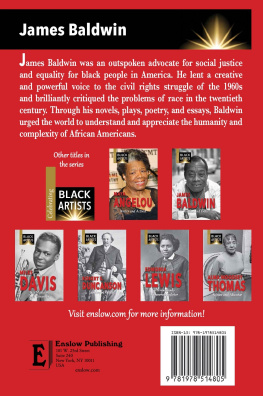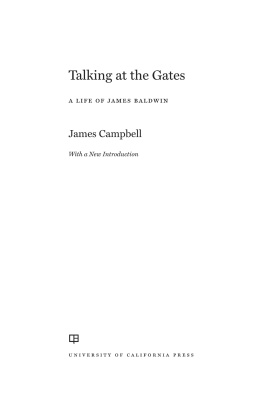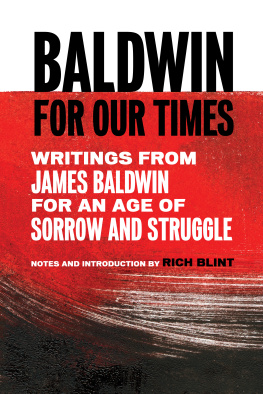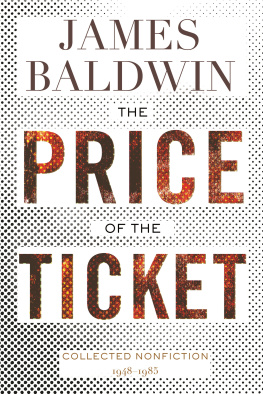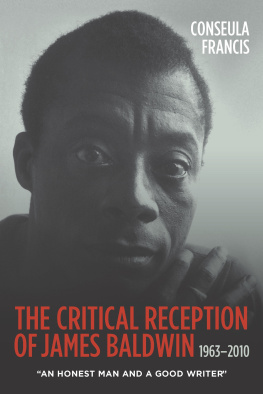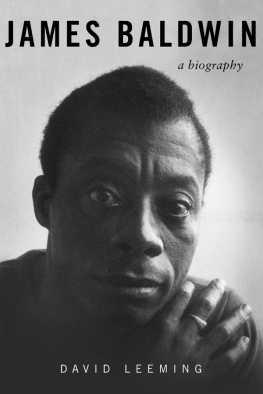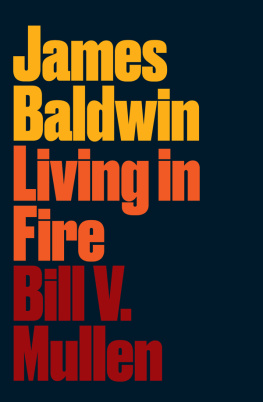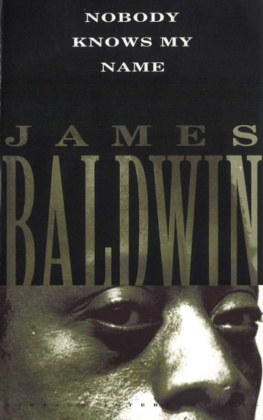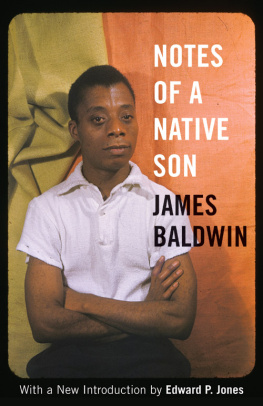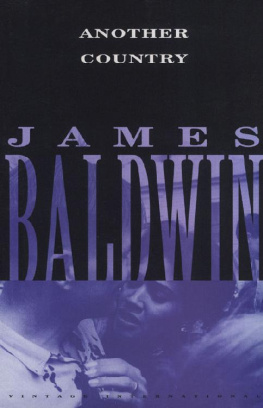
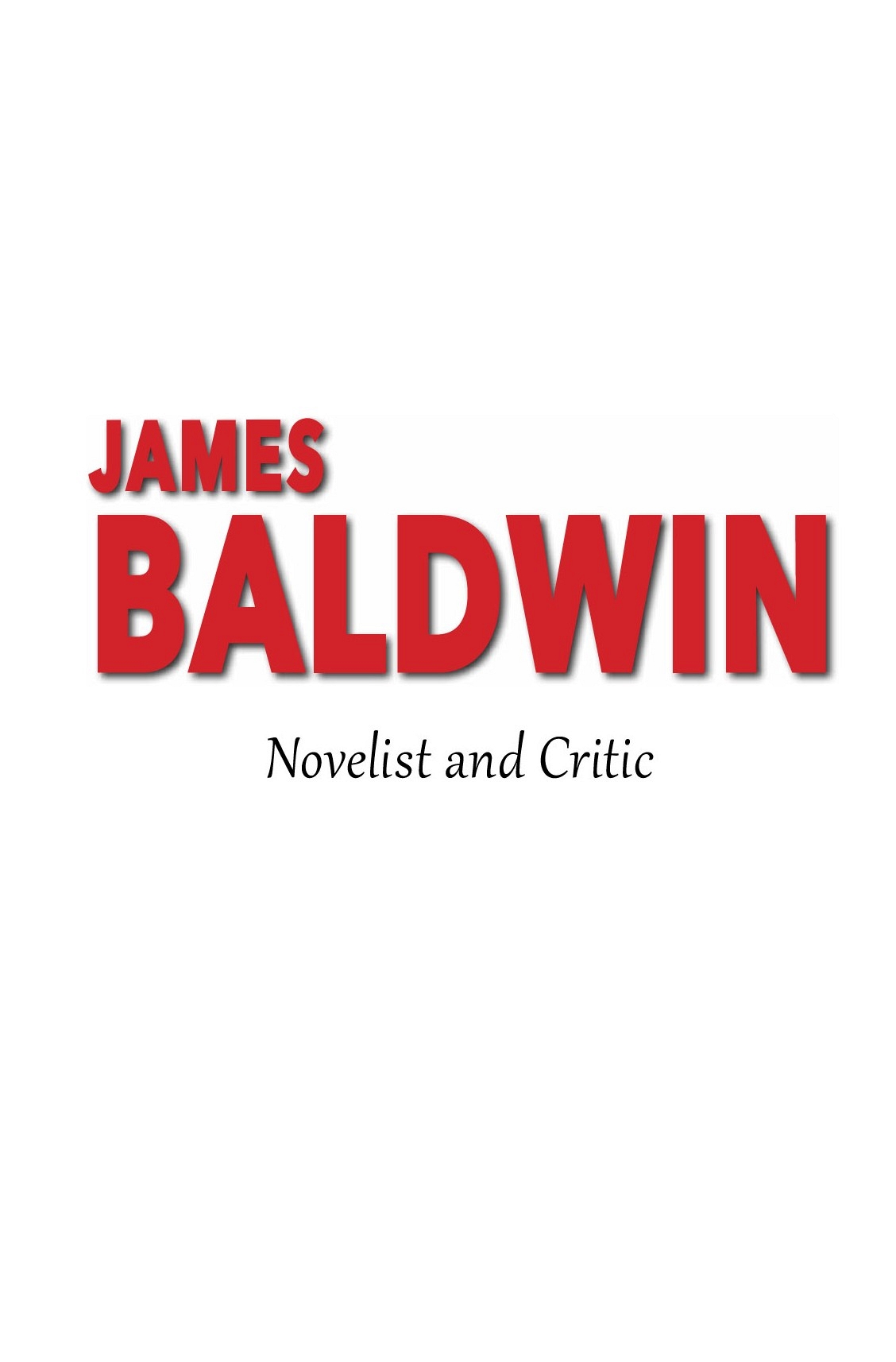
Published in 2020 by Enslow Publishing, LLC
101 W 23rd Street, Suite 240, New York, NY 10011
Copyright 2020 by Enslow Publishing, LLC.
All rights reserved.
No part of this book may be reproduced by any means without the written permission of the publisher.
Library of Congress Cataloging-in-Publication Data
Names: Reed, Glynnis, author.
Title: James Baldwin: novelist and critic / Glynnis Reed.
Description: New York: Enslow Publishing, 2020. | Series: Celebrating black artists | Audience: Grades: 7-12. | Includes bibliographical references and index.
Identifiers: LCCN 2019009609| ISBN 9781978514805 (library bound) | ISBN 9781978514799 (paperback)
Subjects: LCSH: Baldwin, James, 1924-1987Juvenile literature. | Authors, American20th centuryBiographyJuvenile literature. | Civil rights workersUnited StatesBiographyJuvenile literature. | African American authorsBiographyJuvenile literature.
Classification: LCC PS3552.A45 Z867 2020 | DDC 818/.5409dc23 LC record available at https://lccn.loc.gov/2019009609
Printed in the United States of America
To Our Readers: We have done our best to make sure all website addresses in this book were active and appropriate when we went to press. However, the author and the publisher have no control over and assume no liability for the material available on those websites or on any websites they may link to. Any comments or suggestions can be sent by email to .
Photo Credits: James Baldwin Photo Research by Bruce Donnola
Cover, pp. Stefanie Keenan/WireImage/Getty Images
Contents
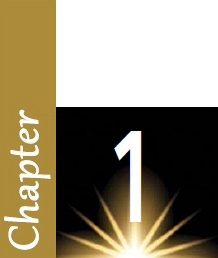
A Gifted Child
T he words of the novelist and essayist James Baldwin struck a chord not only with his own generation but also with those to come. A black, gay intellectual, Baldwin used language like no one else, which is a major reason his books and essays remain relevant more than thirty years after his death. Whether he was speaking or writing, Baldwin sharply criticized the economic and racial inequalities that have existed in the United States since its founding.
Although he was one of Americas toughest critics, he held out hope that the nations racial divide would one day disappear. That day hasnt come, but Baldwin certainly deserves credit for pushing the conversation about race in America forward. His groundbreaking work and insights into racism make it clear why he remains an inspiration to so many people today.
Early Years
James Arthur Baldwin was born to Emma Berdis Jones on August 2, 1924, in New York Citys Harlem Hospital. He did not know his biological father, who was reportedly addicted to drugs. James considered his stepfather, David Baldwin Sr., his dad and referred to him as such. His mother married David when James was two years old, and the couple went on to have eight children. As the eldest of nine, James helped to raise his younger siblings, born over a sixteen-year period.
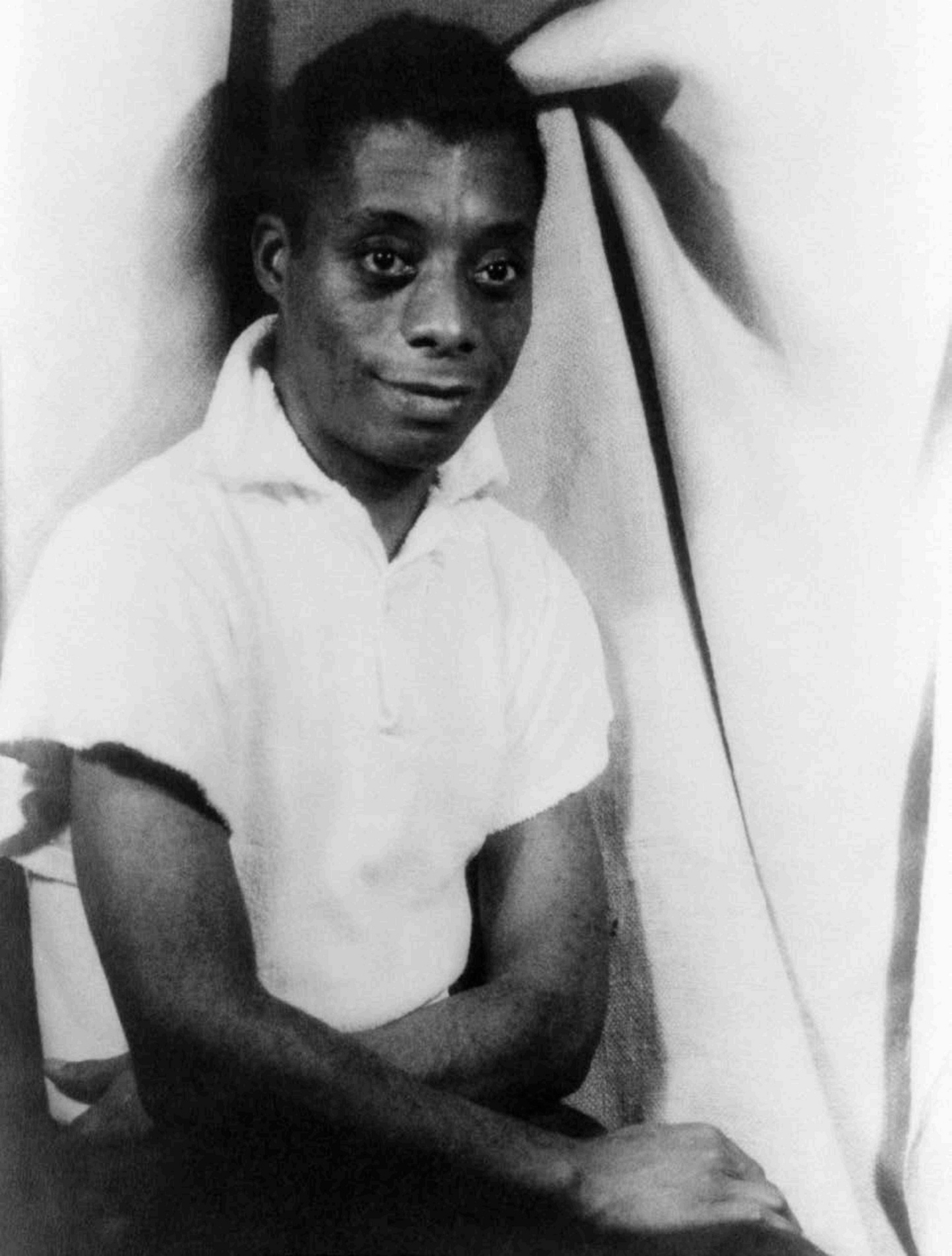
James Baldwin had a curious mind as a small boy, and his teachers supported his interest in literature.
Jamess elementary school principal, Gertrude E. Ayer, and the teachers at PS 24 immediately recognized how smart he was. James absolutely loved to read, and Harriet Beecher Stowes Uncle Toms Cabin was one of his favorite books. It had an antislavery message that nineteenth-century activists called abolitionists widely supported. The novel likely persuaded some readers to join the abolitionist movement to end slavery, and it certainly had a lasting effect on James. When he grew up to become a well-known author, James wrote an essay called Everybodys Protest Novel about Uncle Toms Cabin.
In addition to Harriet Beecher Stowe, James really enjoyed Charles Dickenss writing, especially A Tale of Two Cities. That novel is known for the opening line, It was the best of times, it was the worst of times His teachers urged him to research, write, and visit the library, leading him to read voraciously as a youth.
When James was in elementary school, he wrote his first play, and Miller directed it. Together, she, her husband, and her sister exposed him to the arts. They took James to see a Harlem production of Shakespeares play Macbeth, which featured an all-black cast. They also took him to museums and films.
After PS 24, James attended Frederick Douglass Junior High School. There, Countee Cullen, a Harlem Renaissance poet and Harvard-educated writer, taught him. A black man who had relationships with men and women, Cullen was a more relatable role model for James than Miller had been. In fact, Cullen inspired Jamess dream of going to France. The writer also authored two childrens booksThe Lost Zoo and My Lives and How I Lost Themthat his students could enjoy.
A Young Preacher
At age fourteen, James began attending the Fireside Pentecostal Assembly and decided to become a young minister after participating in a very moving worship meeting there. He preached sermons in several Harlem churches, which earned him a sizable following. He developed an affinity for the words that flowed from the pages of the King James Bible. During his sermons, James had a powerful style of speaking that allowed him to capture the attention of church members and inspire them. His three-year tenure in the pulpit shaped his approach to language, both as a writer and speaker, in adulthood. But his preaching years were also personally challenging for him, since James was a young gay teen struggling to accept his homosexuality. The church and society overall at the time rejected members of the LGBTQ+ community.
Harlem Renaissance
James Baldwin grew up in Harlem, a mostly black neighborhood in New York City. From the 1910s through the mid-1930s, the area was home to an arts and culture boom called the Harlem Renaissance. This happened, in part, because Harlems population grew rapidly as African Americans moved from the South to the North in record numbers during a period called the Great Migration. By 1920, three hundred thousand African Americans from the South had relocated to the North. Many had settled in Harlem, hoping to find better-paying jobs that wouldnt take the kind of toll on their bodies that agricultural work did.
During the Harlem Renaissance, black people in New York City took advantage of the opportunity to make cultural contributions to the arts. They expressed themselves through music, theater, visual arts, dance, and literature. Baldwins junior high school teacher Countee Cullen was himself a literary star of the era and must have been a true inspiration for him. Cullen wrote novels, plays, poetry, and childrens books.
The Harlem Renaissance also fostered the talents of dancer Josephine Baker, writers Langston Hughes and Zora Neale Hurston, actor Paul Robeson, and painter Beauford Delaney, who became Baldwins mentor.
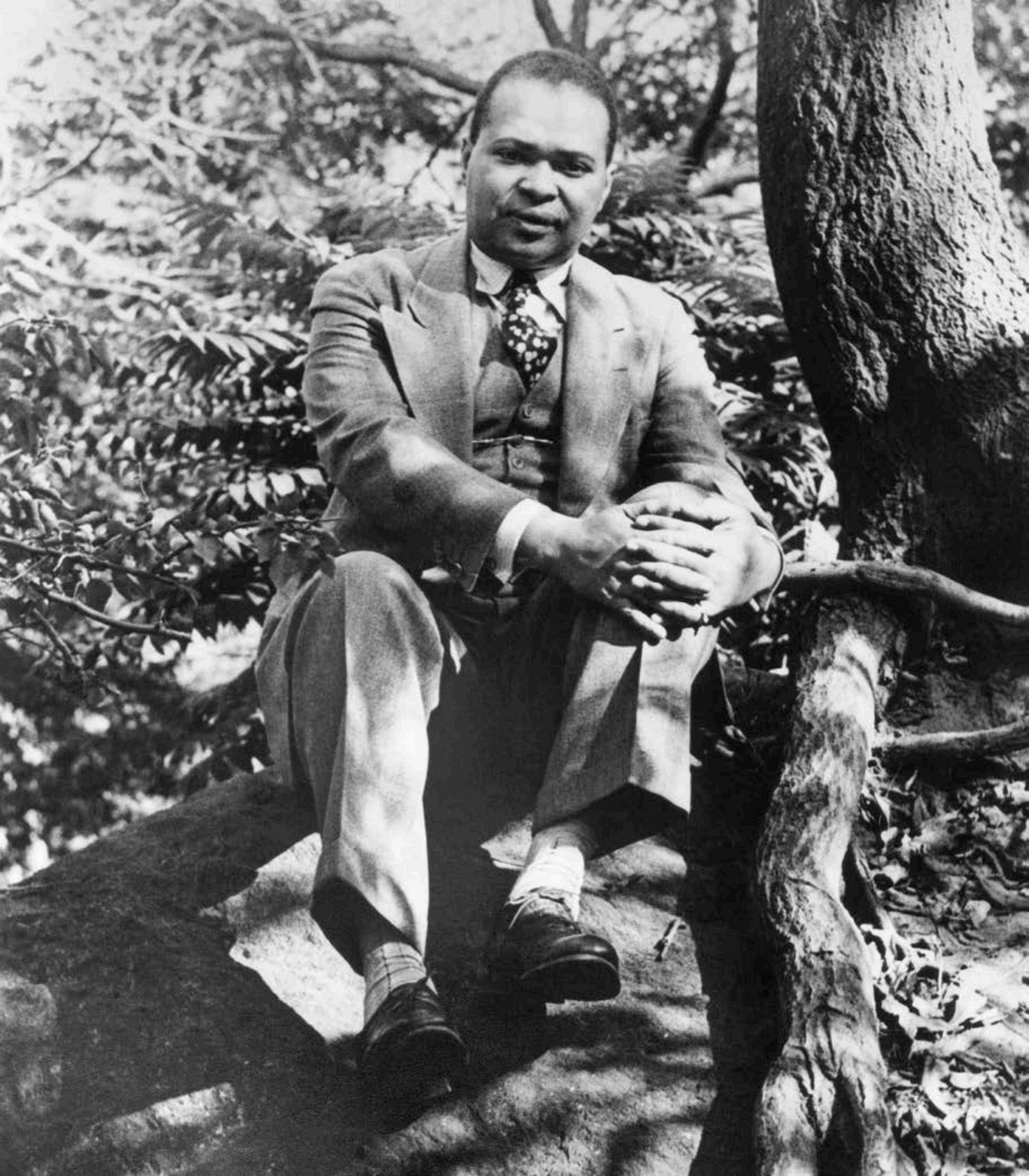
African American poet Countee Cullen enjoyed great success during the Harlem Renaissance, particulary for his 1925 book of poems, Color. He went on to teach James Baldwin.
Next page
